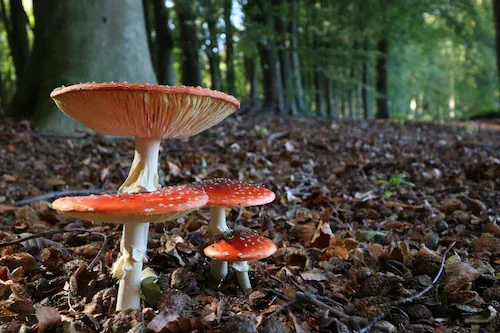Mushroom Plug Spawn vs. Sawdust Spawn: Differences Explained
When it comes to growing mushrooms, the type of spawn you choose can make a difference in your cultivation success. The two most common types of mushroom spawn are: plug spawn and sawdust spawn. In this article, you'll learn the differences between these two methods and how each one can affect your mushroom-growing experience.
Mushroom plug spawn is made by inoculating wooden dowels with mushroom mycelium; it is easier to handle and is suitable for outdoor cultivation. Sawdust spawn is created by mixing mushroom mycelium with sawdust, providing more versatility for your growing conditions, and making it better for indoor cultivation.
Throughout this article, you'll discover the pros and cons of each method, along with examples of when to use plug spawn or sawdust spawn for your specific cultivation goals. Understanding the distinct differences between these two types will help you pick the best for your situation and ensure a fruitful mushroom-growing journey.
Summary
- Sawdust spawn is more adaptable and better for indoor cultivation, whereas mushroom plug spawn is simpler to handle and ideal for outdoor cultivation.
- Sawdust spawn also has a faster colonization time and can be used for a wider range of mushroom varieties.
- The choice between the two depends on your preference, the type of mushroom being grown, and the cultivation environment.

On this page:
Comparison Between Mushroom Plug Spawn and Sawdust Spawn
Below is a table comparing four differences between mushroom plug spawn and sawdust spawn:
| Characteristics | Mushroom Plug Spawn | Sawdust Spawn |
|---|---|---|
| Growth speed and efficiency | Slower growth and less efficient than sawdust spawn | Faster growth and more efficient than plug spawn |
| Cost and availability | More expensive and less readily available than sawdust spawn | Less expensive and more readily available than plug spawn |
| Suitable substrates | Best for hardwood logs, stumps, and branches | Best for sawdust, wood chips, and straw |
| Storage and shelf life | Shorter shelf life than sawdust spawn and requires refrigeration | Longer shelf life than plug spawn and can be stored at room temperature |
Growth speed and efficiency of plug and sawdust spawns
When comparing growth speed and efficiency, sawdust spawn has an advantage over plug spawn. Sawdust spawn allows for quicker inoculation and a faster incubation period until fruiting due to the increased number of inoculation points provided by the sawdust. On the other hand, plug spawn can be slower because the mycelium takes a while to migrate into the sapwood of the log.
Cost and availability of plug and sawdust spawns
When it comes to cost, plug spawn is typically more expensive than sawdust spawn. However, plug spawn is more accessible and available in smaller quantities, making it a better choice if you're just starting out or working on a small-scale project.
Suitable substrates of plug and sawdust spawns
Sawdust spawn is more versatile when it comes to suitable substrates for mushroom cultivation. It works better for indoor cultivation, while plug spawn is easier to handle and better suited for outdoor cultivation, such as on logs. If you're working with larger substrates, sawdust spawn would be the preferred option, as it has more inoculation points.
Storage and shelf life of plug and sawdust spawns
Plug spawn is less likely to dry out, and it has a longer shelf life when stored in the fridge than sawdust spawn. This makes plug spawn a better option if you're worried about not using up all your spawn quickly or if you have limited time to work on your mushroom cultivation projects.

Mushroom Plug Spawn in Detail
Characteristics and uses of mushroom plug spawn
Mushroom plug spawn consists of hardwood dowels that have been inoculated with mycelium. These dowels are used for outdoor cultivation, primarily involving hardwood logs or stumps.
To use plug spawn, you simply drill holes in the logs and insert the dowels, which then colonize the log with the desired mushroom variety. Usually, it takes about 1-2 years for the mushrooms to properly colonize and fruit, depending on the species and log size.
Plug spawn is typically more attractive to smaller scale growers or hobbyists, as it requires fewer tools and is relatively straightforward. However, it is worth noting that it is generally more expensive than sawdust spawn, and it might not be suitable for larger-scale production.
Advantages and disadvantages of mushroom plug spawn
There are several advantages to using mushroom plug spawn in your cultivation process. First, it is fairly easy to handle, requiring no special tools or equipment, making it an accessible choice for beginners. Additionally, your outdoor setup can benefit from aesthetically pleasing log stacks colonized with mushrooms, adding some visual interest to your garden or wooded area.
However, some disadvantages come with using plug spawn. One significant drawback is that it is generally slower to colonize and produce mushrooms when compared to sawdust spawn, taking up to two years in some cases (North Spore). Furthermore, as mentioned earlier, plug spawn can be more expensive than sawdust, often making it a less attractive option for those working on larger projects or more extensive commercial operations.
Sawdust Spawn in Detail
Characteristics and uses of sawdust spawn
Sawdust spawn is created by mixing mushroom mycelium with sawdust, providing many inoculation points for growing mushrooms. This type of spawn is versatile and well-suited for indoor cultivation, as well as use with larger substrates. Want to grow mushrooms in bags or blocks? Sawdust spawn could be your ideal choice.
Thanks to its fine texture, sawdust spawn offers faster colonization of the substrate. This results in mushroom pins forming more quickly compared to other spawn types, such as grain spawn.
Advantages and disadvantages of sawdust spawn
There are several advantages to using sawdust spawn for mushroom cultivation. Here are some key benefits:
- More inoculation points leading to faster pin formation
- Cheaper than alternative spawn types like grain spawn
- Less attractive to pests and microbes compared to other spawn types
Despite its benefits, sawdust spawn has some drawbacks:
- May require specialized equipment and techniques for inoculation
- Shelf life is shorter than some other spawn types, such as plug spawn
Overall, you should consider whether the advantages of using sawdust spawn are suitable for your specific mushroom cultivation needs and circumstances before deciding if it's the right choice for your project.
Choosing Between Mushroom Plug Spawn and Sawdust Spawn
When selecting the right spawn for your mushroom cultivation project, consider the type of mushrooms, scale of operation, substrate, and application. By taking these factors into account, you can make a more informed choice and enjoy a successful mushroom-growing experience.

As a mushroom cultivator, understanding the differences between mushroom plug spawn and sawdust spawn is essential. This knowledge will help you make better decisions when selecting the right spawn for your project.
Selecting the right spawn for your project
Both plug spawn and sawdust spawn can effectively grow mushrooms, but they have their advantages and disadvantages. So, it's crucial to evaluate your specific needs before making a choice. Here are some factors to consider:
-
Type of mushrooms: Some mushroom varieties may grow better with a specific type of spawn. For example, shiitake mushrooms often prefer sawdust spawn, while oyster mushrooms can thrive with plug spawn.
-
Scale of operation: Plug spawn is more expensive compared to sawdust spawn and is usually more suitable for smaller-scale operations.
-
Substrate: Consider the type of substrate you're using. Sawdust spawn works best with logs, while plug spawn is suitable for hardwood dowels.
-
Application: Sawdust spawn needs specific tools, like an inoculator, to inject spawn into the substrate, whereas plug spawn dowels can simply be hammered into pre-drilled holes.



